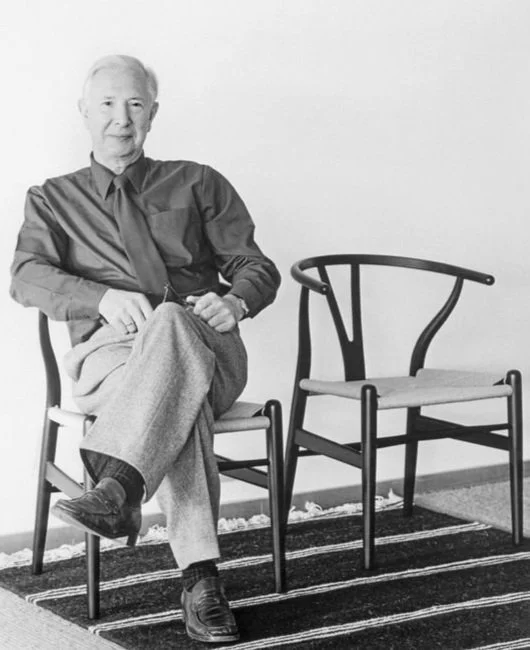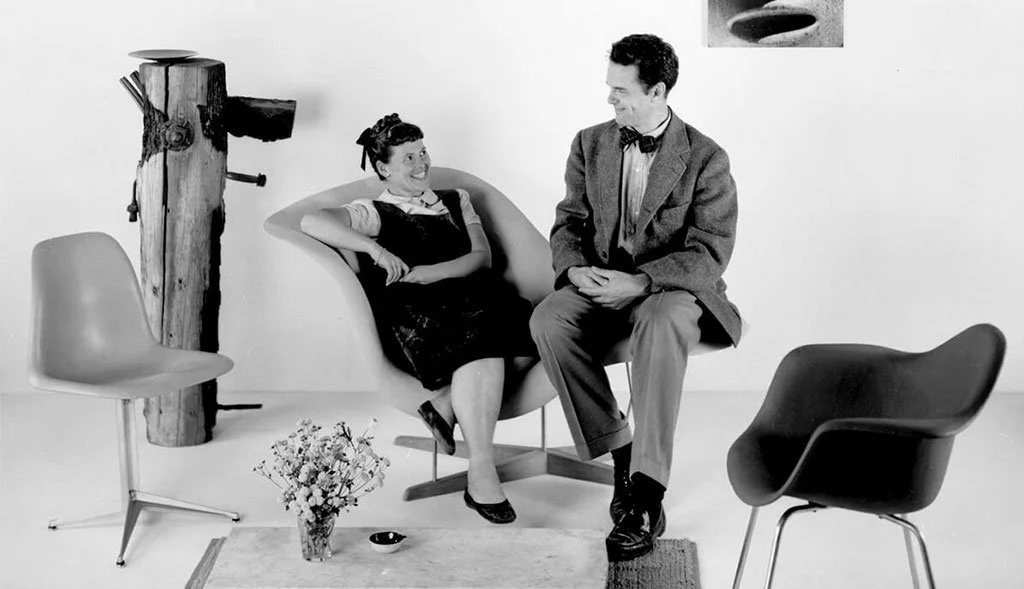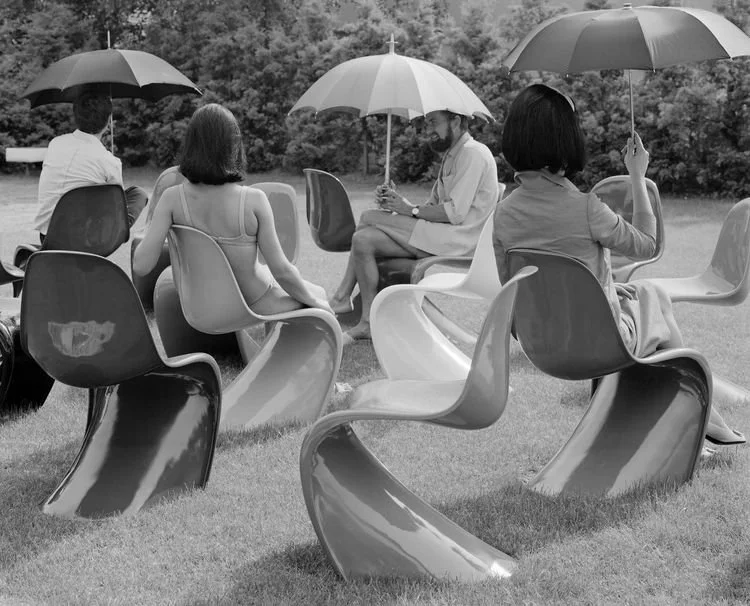Decoding Iconic Furniture: What Makes Designs Stand the Test of Time?
I recently went to the MODA exhibit in Atlanta, “Please Be Seated,” a journey through 150 years of iconic chair design. The journey began with the elegant Thonet 214 chair from 1859 and continued through design milestones like Marcel Breuer’s Wassily chair, Hans Wegner’s Wishbone chair, and the unforgettable Panton chair by Verner Panton, each plaqued with their stories of innovation and influence. While I left feeling inspired and brimming with admiration for these masterpieces, I left with one question pinging in my ears:
What makes a design iconic?
Is there a secret alchemy that elevates a piece of furniture above trends, allowing it to transcend time like a Beatles song or a Van Gogh painting? Why do some designs endure while others fade, relegated to the dusty archives of Pinterest boards past?
In a world overwhelmed by options—where “fast furniture” mirrors the churn of fast fashion—the timelessness of these iconic designs feels even more extraordinary. To help unravel this mystery, let’s explore the legacy of some of the most influential furniture designers of the 20th century—and draw lessons for today’s creators.
Wassily Chair by Marcel Breuer (1925)
Take the Wassily Chair, designed by Marcel Breuer in 1925. With its tubular steel frame and sleek leather upholstery, it was a radical departure from the ornate, bulky furniture of its time. Breuer didn’t just design a chair; he redefined what furniture could be, embodying the Bauhaus principle of “form follows function.” His collaboration with Thonet (the same firm behind the Thonet 214 chair) ensured the chair reached a broad audience, solidifying its status as a design icon.
Wishbone Chair by Hans J. Wegner (1949)
And then there’s Hans Wegner’s Wishbone Chair (or CH24), a tribute to craftsmanship and human-centered design which helped solidify Danish design as synonymous with high quality craftsmanship. Inspired by Chinese Ming dynasty chairs, Wegner combined traditional woodworking techniques with modern minimalism to create a piece that feels both timeless and approachable.
Wegner began partnering with furniture manufacturer Carl Hansen & Søn in 1950, which helped catapult the Wishbone chair to greater popularity. Today, the Wishbone is still considered 'the world's best wooden chair' and Carl Hansen & Søn’s best-selling chair.
No conversation about iconic furniture is complete without mentioning Charles and Ray Eames. Their 1956 Eames Lounge Chair and Ottoman epitomize mid-century modern luxury, blending molded plywood and leather in a design that’s as inviting as it is sophisticated. Yet their true genius lay in democratizing design. Pieces like the Eames Molded Plastic Chair brought high-quality, functional furniture into ordinary homes. By championing mass production and affordability without sacrificing aesthetics, the Eameses redefined what it meant to create for the everyman.
Charles and Ray Eames with many of their iconic creations. Courtesy of www.utilitydesign.com
Panton Chair by Verner Panton (1967)
Similarly, the Panton Chair by Verner Panton shattered conventions. As the first all-plastic chair to be molded in a single continuous piece, its fluid lines and bold colors defied conventions of materiality and form. The chair was brought through a partnership with Vitra, a furniture manufacturer willing to take risks. It challenged both material and aesthetic norms, making it a symbol of 1960s optimism and innovation.
Innovation Meets Nostalgia
What unites these designs? They didn’t just push boundaries; they created emotional connections. Each piece is a time capsule of its era, reflecting the social, technological, and cultural revolutions of its day. The Wassily Chair spoke to a post-World War I hunger for functionality and simplicity. The Wishbone Chair, with its organic lines, evoked a return to nature and hand-crafted beauty in the face of industrialization. The Eames Lounge Chair redefined modern luxury for the masses. The Panton Chair epitomized the playful futurism of the Space Age.
Lessons for Modern Designers
Today’s designers face a different landscape. The democratization of design tools, the rise of digital marketplaces, and the relentless pace of trends make it harder than ever to stand out. Yet, the principles of timeless design remain unchanged:
Push Boundaries: Iconic designs challenge the status quo. Experiment with materials, rethink forms, and embrace technology.
Tell a Story: Whether it’s a nod to heritage, a tribute to craftsmanship, or a vision for the future, an enduring design is one with a narrative that resonates.
Collaborate Strategically: Partnerships with the right manufacturers or distributors can amplify a design’s reach and impact.
Create for Longevity: In a world saturated with fast fashion and disposable goods, timeless design requires durability, adaptability and functionality.
The Timeless Alchemy
Creating iconic furniture is no small feat in today’s fast-paced, trend-driven market. But as the legacies of Breuer, Wegner, Eameses, and Panton demonstrate, the formula for timeless design lies in a harmonious blend of innovation, collaboration, and purpose. By pushing boundaries and staying true to a clear vision, designers can craft pieces that not only define an era but also transcend it—ensuring their work stands the test of time.
For today’s designers, the challenge is to create pieces that evoke a sense of belonging in an ever-changing world. Nostalgia and innovation are not opposites—they’re collaborators in crafting designs that endure. Who knows? Your next chair might just find itself in an exhibit like “Please Be Seated.”




